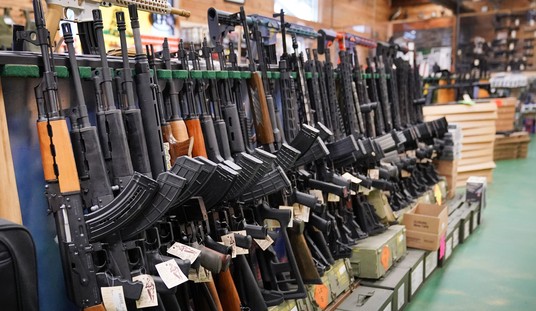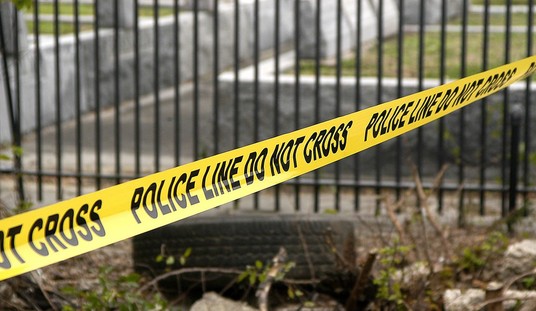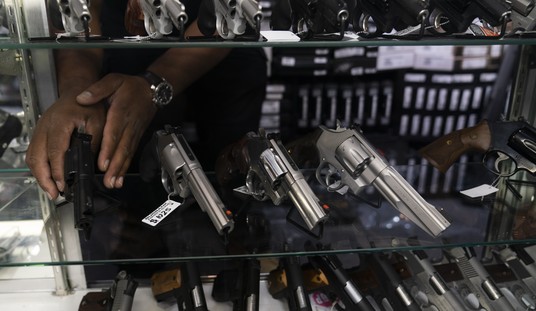They’re some of the most violent crimes being committed, but in Boston, non-fatal shootings don’t get the type of attention from detectives that you might think they do, and that’s actually helping to drive the cycle of violence in the city. That’s the conclusion of a report commissioned by the Boston Police Department just last year, but according to WGBH in Boston, the police department has yet to make solving those crimes a higher priority on par with clearing homicides.
The authors, at Northeastern and Duke universities, concluded that Boston could, by putting additional resources into non-fatal shooting investigations, “hold violent gun offenders accountable, deliver justice to victims, and prevent future gun attacks.”
Yet, the department has not done so. Nor are there any plans to follow those findings, confirms Sgt. Det. John Boyle, a department spokesperson. “In the big picture, it’s tough to devote people strictly to unsolved shootings,” he says.
We are at a moment when Boston’s officials are, once again, considering much-needed reforms to its police department. Activists press for shifting funds out of the department and into other community services. A task force is considering recommendations for oversight and training. The ACLU demands disclosure of so-called “Brady officers” whose untrustworthiness must be disclosed before they testify at trial.
Yet, the city continues to fail a basic element of the relationship between the police and the community: reducing the most dangerous activity, and removing the most dangerous offenders.
I’m sure that it’s tough to devote more detectives to solving unsolved shootings, but that doesn’t mean it shouldn’t be done. Given what we know about the nature of shootings in any given community; that they are driven by a small number of individuals who are more likely to both shoot and be shot. These guys are human super-spreader events, only they’re spreading violence and not the Wuhan Flu. They’re the nexus of ripples of violence that spread across neighborhoods and throughout cities. Why wouldn’t you want to prioritize finding and stopping them? Why wait until they kill someone?
The study’s finding might seem self-evident—that there would be benefits to trying harder to solve and make arrests when people shoot other people. But, as the study’s authors note, “the prevailing view [in law enforcement] is that follow-up investigations are of limited value.”
Top brass at the BPD, and Mayor Marty Walsh, have explicitly endorsed the latter view, and that assumption has guided department philosophy for nearly 20 years.
The study, which used five years of BPD data from 2010 through 2014, sought to explain the gap between Boston’s 43 percent clearance rate—the percentage resulting in an arrest or other disposition, such as death of the suspect—for gun murders in the city, and its 19 percent clearance rate for non-fatal gun assaults.
They found no significant inherent differences between the fatal and non-fatal cases themselves, such as age, gender, motive, or gang involvement, that might make one type more difficult to solve than the other.
What did stand out to the researchers was the effect of time.
For both fatal and non-fatal investigations, 11 percent were cleared within the first two days. But after that, rates diverged. Fewer than one of every 10 non-fatal cases still open after two days ever got cleared. But more than a third of fatal ones were later cleared.
Going further, the researchers looked at the types of key evidence in the cases—and found that detectives interviewed more witnesses, ran more computer checks, collected more videos and other tangible evidence, ordered more lab tests, and analyzed more phone and computer data for fatal cases than non-fatal ones.
In particular, the researchers argue that the data suggests that witnesses become more willing to cooperate over time, “in response to the investigator’s efforts.”
In terms of outcome, obviously homicides are more serious crimes than non-fatal shootings. In terms of intent, however, the two may be often equally as important to solve.
So why don’t police put more effort into solving these non-fatal shootings? As the report indicates, there’s a mindset among many in law enforcement that the code of the street not to cooperate with law enforcement is more likely to be followed when the shooting wasn’t fatal.
Frankly, they’re probably right. In fact, even if an innocent victim was the person injured, officers are probably going to find people more reluctant to talk than they would if it were a homicide. If you live in a high crime neighborhood you’ve seen how the justice system “works”. The guy who shot up the corner gets arrested, cops a plea, does a few months before he’s released on probation, and is soon back out on the street and all too often falling into the same routine.
If he does go to trial, or if he finds out that you’ve been talking to police, you’re likely to be the subject of retaliation from him or his friends. Resources are limited enough for witness protection services in homicide cases. Ensuring the safety of witnesses in non-fatal shootings that go to trial would definitely come with a price tag, though I think it would be one worth paying.
There’s one other factor that keeps good people in bad neighborhoods from talking to police about non-fatal shootings; the sense that officers generally don’t care about them or their communities. They see that police don’t put a lot of time and energy into solving these kinds of cases if they can’t make an arrest in the first 48 hours, and they assume that means that law enforcement has no real motivation or desire to stop the shootings.
It’s a self-fulfilling prophecy, in other words. Cops don’t think it’s worth putting more time and people power into solving non-fatal shootings because they don’t think they’ll get the help they need from eyewitnesses, and potential eyewitnesses grow more skeptical that cops give a damn with every shooting that goes unsolved.
In this case, law enforcement has to take the first step in order for the residents of these neighborhoods to even attempt to believe that the police are serious about trying to solve these cases. As I’ve indicated, police need help from the city, including funds to increase the number of detectives working non-fatal shootings and increasing the funds available for witness protection services.
This is a really good idea, and it sounds so simple on paper to implement, but it turns out there a few challenges to being able to effectively put this tactic into place. Still, I think the results could be striking, and it’s worth an experiment in Boston or any other city that doesn’t place a high priority on solving non-fatal shootings. Start small; pick the neighborhood with the most amount of shootings over the past two months, assign enough detectives to actively work all non-fatal shootings for a six month period, engage in community outreach to let residents know what you’re doing and why their help is so important, protect the people who come forward, and see what the results are six months later.
We know that the best way to reduce crime is to ensure swift and certain consequences. If most non-fatal shootings never result in an arrest, guess what you’re going to have more of? As difficult as it might be to try to implement this policy change, the potential results are worth the attempt.









